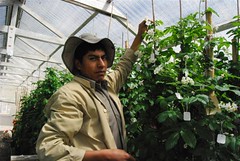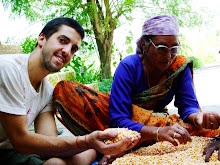This photo is also from the International Potato Center in Peru. I spent a few days with them learning about their work and seeing the other side of how native potatoes are used. It was really interesting to learn about the importance of some of the rare local varieties in their breeding work. They are working on breeding potatoes resistant to late blight and numerous others diseases or stressors. While not perfect, more emphasis is being put on developing varieties that will actually work for marginal farmers. My spanish was much better by this point and I got to talk to many of the breeders, scientists, and staff about their work.
This visit emphasized the point again how farmers and scientists can work together in a way that benefits both. We owe all of our worlds food system to the anicent farmers who have developed, selected, and kept crop diversity alive. Now, many of them need our helped and suscessful strategies can be implemented if we value traditional knowledge, but work to improve it slightly with modern techniques.
Many more scientists and policy makers are starting to see the value of in-situ crop conservation (keeping divsersity growing and alive in farmers fields). It is widely recognized that the crops growing in farmers fields and their genes will be crucial if we hope to survive the impending climate change. By keeping native or traditional varietes growing in farmers fields, they can keep evoloving and adapting to the changing conditions (droughts, floods, heat, early frost, etc).
We need both the work of the worlds susbsistence farmers and the work of groups like the International Potato Center.
Saturday, May 9, 2009
Subscribe to:
Post Comments (Atom)






No comments:
Post a Comment